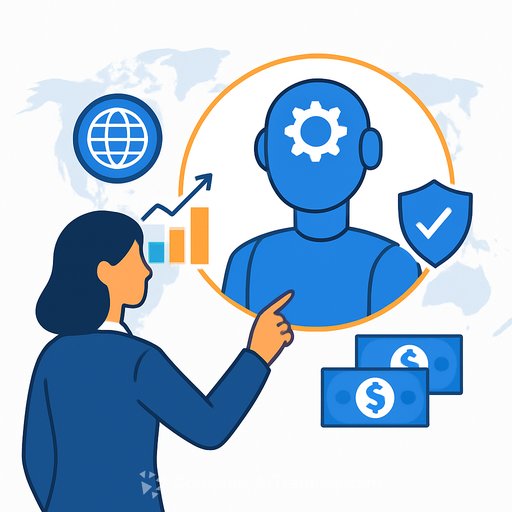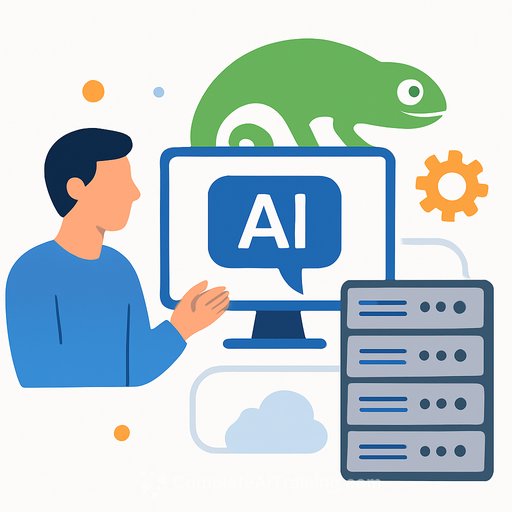Emirates x OpenAI: What Operations Leaders Should Do Next
Emirates has signed a memorandum of understanding with OpenAI to embed artificial intelligence across operational, commercial, and customer-facing processes. For operations teams, this is a signal: AI is moving from pilot tests to production. Smarter schedules, faster decisions, tighter cost control-delivered with governance and training at the core.
The plan includes deploying ChatGPT Enterprise, establishing internal training programs and governance structures, building a network of AI "champions," and launching a Centre of Excellence. Technology teams from both sides will co-develop frameworks and controlled testing environments. Leadership at Emirates and OpenAI have called out the potential to tackle complex problems, strengthen operations, and improve service quality at scale.
What this agreement actually covers
- Enterprise-grade AI: ChatGPT Enterprise for secure use cases across planning, OCC, crew, customer ops, and back-office workflows.
- Training and governance: Standardized education, access controls, policy, and review boards to reduce risk and drive adoption.
- Centre of Excellence: Central team to set standards, share playbooks, and accelerate use cases across departments.
- Controlled testing: Frameworks for sandboxing, shadow mode, and phased rollouts before live decisions impact flights or customers.
Where AI is already delivering in aviation
Airlines are applying AI in predictive maintenance, fuel planning, irregular ops management, and customer support. Results are measurable. American Airlines reports that Smart Gating at DFW cut taxi times by 20% and saved over 11 hours of aircraft taxiing per day, easing congestion and fuel burn.
Source: American Airlines newsroom
Implications for Emirates operations
- Operational planning: Real-time data analysis to improve block times, stand assignments, and gate utilization. Faster scenario testing during disruptions.
- Turnarounds and ground ops: AI-powered alerts for delay risks (late bags, catering, fueling), with recommended actions to cut variance.
- Crew and rostering: Schedule assistance that balances legality, fatigue rules, and preferences while improving coverage and cost.
- Maintenance: Predictive insights to prioritize tasks, reduce unscheduled events, and improve part availability.
- Customer operations: Personalized communications and automated handling of routine requests, freeing agents for complex cases.
- Rapid prototyping: AI-assisted workflow builds so teams can test, learn, and iterate without long development cycles.
Governance and safety: how to keep control
- Human-in-the-loop: Keep AI in advisory mode for operational decisions until performance is proven in shadow testing.
- Explainability: Require decision rationale for high-impact actions (dispatch, reroutes, MEL deferrals, crew swaps).
- Data controls: Clear rules on PII, operational data, and model access. Log prompts, outputs, and approvals.
- Model performance: Monitor drift, false positives/negatives, and bias. Set rollback paths for each use case.
- Regulatory alignment: Map use cases to safety oversight and documentation requirements.
EASA's work on AI in aviation is a useful reference for oversight and assurance.
A simple rollout plan for ops leaders
- Start with low-risk wins: Knowledge search, SOP assistants, post-ops summaries, and reporting automation.
- Move to decision support: Disruption playbooks, slot/gate/stand suggestions, turn risk alerts-kept in advisory mode.
- Phase to semi-automation: Pre-approved actions with guardrails (e.g., passenger re-accommodation rules, minor crew swaps).
- Embed change management: Train "AI champions" in each function; document playbooks; run weekly reviews on results and exceptions.
- Codify governance: Approval matrices, sign-offs for critical systems, and audit trails across every model and workflow.
Metrics that matter
- On-time performance: D0, A14, turnaround variance, block-to-block consistency.
- Cost and efficiency: Fuel burn per ASK, taxi-out/time-to-gate, crew utilization, overtime, and swaps.
- Reliability: Unscheduled maintenance events, MTBUR/MTBF, spare ratio, part stockouts.
- Customer ops: Re-booking time, first-contact resolution, handling time, and sentiment on service recovery.
- Productivity: Manual touch reduction, automation rate, exception rate, and cycle time per workflow.
- Risk: Number of escalations, model override rate, and incident findings.
What to build internally
- Data pipeline hygiene: Clean, tagged, and timely data streams from OCC, MRO, crew, and customer systems.
- Reusable components: Templates for prompts, connectors, approval steps, and audit logging.
- Testing playbook: Shadow mode standards, A/B frameworks, success thresholds, and rollback policies.
- People capability: Role-based training for ops controllers, station managers, planners, and customer teams.
For teams building AI "champions"
Pick pragmatic operators who know the work, not just the tech. Give them time, tools, and a backlog of high-value pain points. Keep their scope small, measure results weekly, and broadcast wins to accelerate adoption.
If you need a structured path to upskill operations staff, explore practical programs focused on automation and applied use cases: AI certification for automation.
Bottom line
Emirates' OpenAI partnership points to a clear direction: AI embedded into daily operations, trained people, and strong guardrails. The opportunity isn't just smarter tech-it's more predictable turns, tighter schedules, faster recovery, and fewer avoidable costs. Start small, measure hard, and scale what works.
This is how operations get simpler for teams and smoother for customers-quietly, in the background, where it counts.
Your membership also unlocks:





